Word 2013
Breaks
Section breaks
Section breaks create a barrier between parts of a document, allowing you to format each section independently. For example, you may want one section to have two columns without adding columns to the entire document. Word has several different types of section breaks:
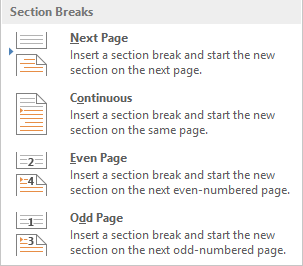 Section Breaks in Word
Section Breaks in Word- Next Page: This option adds a section break and moves text after the break to the next page of the document. This is useful for creating a new page with normal formatting after a page that contains column formatting.
- Continuous: This option inserts a section break and allows you to continue working on the same page. This type of break is useful when you need to separate a paragraph from columns.
- Even Page and Odd Page: These options add a section break and move the text after the break to the next even or odd page. These options may be useful when you need to begin a new section on an even or odd page (for example, a new chapter of a book).
To insert a section break:
In our example, we'll add a section break to separate a paragraph from a two-column list. This will allow us to change the formatting of the paragraph so it no longer appears formatted as a column.
- Place the insertion point where you want to create the break. In our example, we'll place it at the beginning of the paragraph we wish to separate from column formatting.
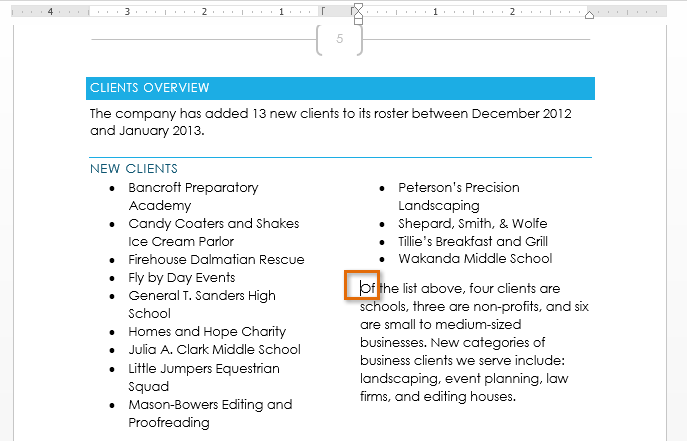 Placing the insertion point
Placing the insertion point - On the Page Layout tab, click the Breaks command, then select the desired section break from the drop-down menu that appears. In our example, we'll select Continuous so our paragraph remains on the same page as the columns.
 Selecting a section break
Selecting a section break - A section break will appear in the document.
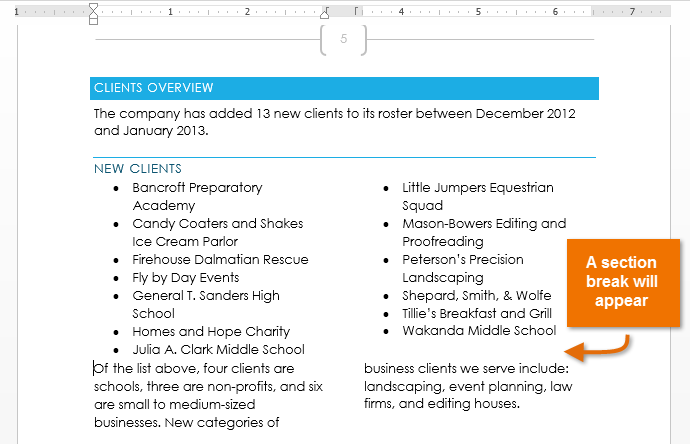 The new section break
The new section break - The text before and after the section break can now be formatted separately. Apply the formatting options you want. In our example, we'll apply one-column formatting to the paragraph so it is no longer formatted as columns.
 Applying a new format
Applying a new format - The text will be formatted in the document.
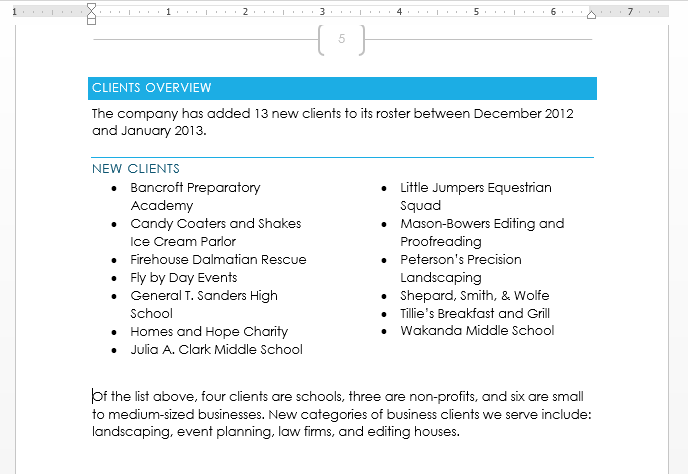 The formatted text
The formatted text
Other types of breaks
When you want to format the appearance of columns or modify text wrapping around an image, Word offers additional break options that can help.
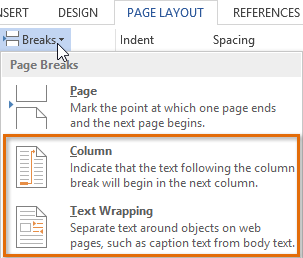 Additional break options
Additional break options- Column: When creating multiple columns, you can apply a Column Break to balance the appearance of the columns. Any text following the Column Break will begin in the next column. To learn more about how to create columns in your document, visit our lesson on Columns.
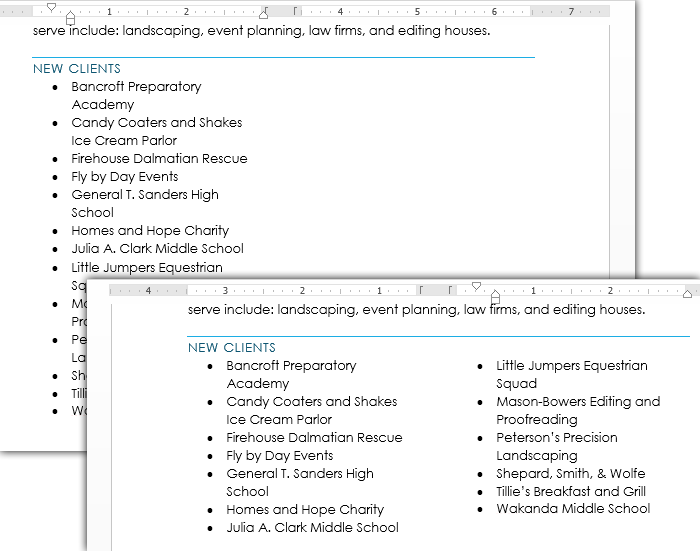 The Column break
The Column break - Text wrapping: When text has been wrapped around an image or object, you can use the Text Wrapping Break to end the wrapping and begin typing on the line below the image.
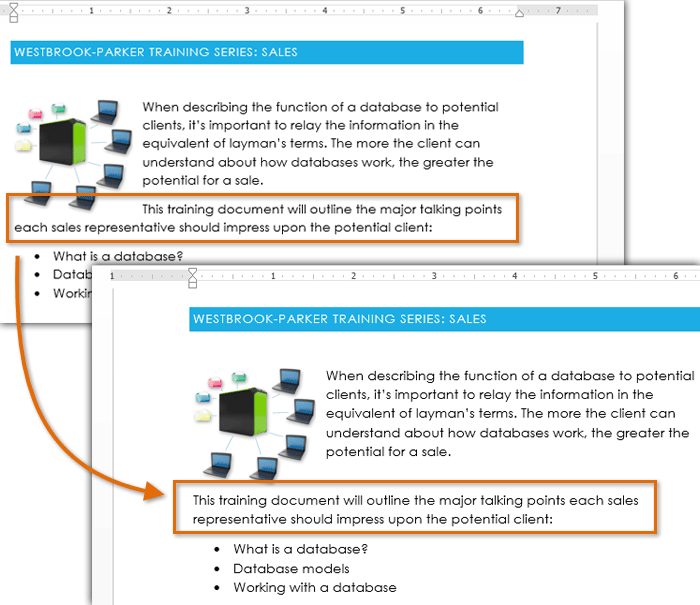 The Text Wrapping break
The Text Wrapping break






